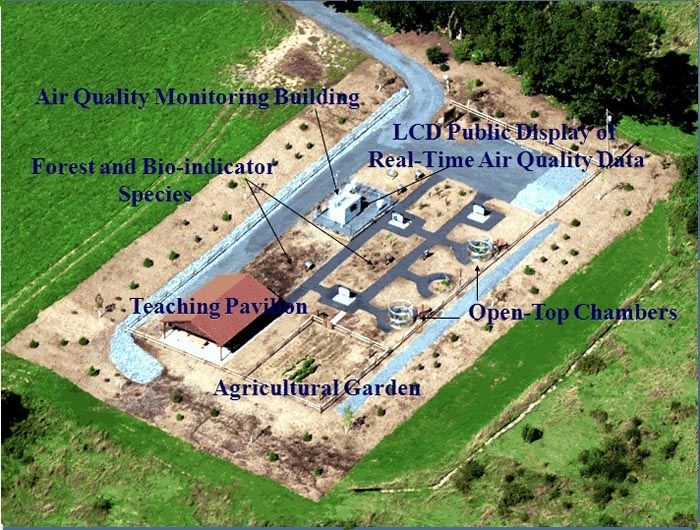Air pollution or smog! 6 in 10 US residents live in areas with dangerous levels of air pollution.

aerial view of center
Several methods are being used at the learning and demonstration center to convey vital information about the sources and effects of air pollutants:
- Meteorological equipment is being used for both monitoring and demonstrating the presence of pollutants;
- Cultivated gardens of numerous native plant and forest tree species known to be sensitive to various air pollutants (bioindicators) show visitors the effects of air pollutants such as tropospheric ozone on numerous plant species;
- Various research techniques are being used in open-top chambers in which ozone levels are lower than in ambient air in order to demonstrate the effects of pollutants on foliar symptom expression, seasonal growth, and premature leaf senescence;
- The facility includes a teaching pavilion where the most recent findings of Penn State's programs in air quality research will be made available; and the newest pollution abatement technologies and strategies being developed by industries and government agencies will be displayed; and
- Interactive seminars and demonstrations are encouraged.
Department of Plant Science
Address
102 Tyson BuildingUniversity Park, PA 16802
Department of Plant Science
Address
102 Tyson BuildingUniversity Park, PA 16802

